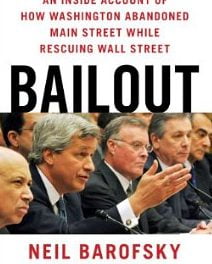Bank of America v. Caulkett
Facts: A homeowner obtains two mortgages to fund their purchase of a property. The fair market value (FMV) of the property decreases, resulting in the amount owed on the first mortgage to exceed the FMV of the property. The homeowner experiences an economic hardship and petitions for Chapter 7 bankruptcy to reduce their mortgage debts.
Claim: The homeowner seeks to eliminate the second mortgage from title, claiming the extinguishment is proper since the amount of the first mortgage exceeds the value of the property leaving no interest in the property to be secured by the second mortgage.
Counter claim: The second mortgage holder claims their second mortgage may not be eliminated as a lien since their interest is a secured debt allowed under bankruptcy rules.
Holding: The United States Supreme Court holds the homeowner may not extinguish the second mortgage from title to the property when the property’s FMV is less than the first mortgage amount since the second mortgage holder’s interest is a secured claim of an allowed debt under bankruptcy law, regardless of the homeowner’s negative equity position in ownership. [Bank of America v. Caulkett (June 1, 2015)_U.S._]
Editor’s note — It is important to note the type of bankruptcy a homeowner files drastically alters the treatment of mortgage liens in bankruptcy. The court’s ruling here only applies to lien-stripping in Chapter 7 bankruptcy and does not alter a homeowner’s ability to strip a junior lien under Chapter 13 bankruptcy proceedings.
Chapter 7 bankruptcy permits the discharge of all debt. The homeowner’s nonexempt assets are then liquidated and disbursed to the homeowner’s creditors and determined by the bankruptcy court. [11 USC §701 et seq.]
However, any property subject to a mortgage lien remains encumbered by the lien even after debt is discharged in bankruptcy and the homeowner is no longer required to cure their debt. Thus, though the homeowner is not liable for mortgage payments and may not be pursued by the mortgage holder, the secured mortgage holder’s lien remains enforceable. The mortgage holder retains the right to foreclose on the property (depending on the priority of the lien) or leave the lien attached until it is settled through negotiations between the mortgage holder and homeowner (e.g., a reduced one-time payment, or an agreed-to number of payments over a period of time).
Chapter 13 bankruptcy requires all secured and unsecured creditors to be repaid under a three to five year repayment plan. Any debt remaining at the end of the payment plan is discharged. This allows homeowners to halt foreclosure proceedings through an automatic stay and cure their mortgage delinquencies over time — keeping their home (and maintaining the status quo). [11 USC §1301 et seq.]
The owner’s property may later be foreclosed on by the mortgage holder if the homeowner becomes delinquent on their mortgage payments again. However, unlike Chapter 7 bankruptcy, Chapter 13 bankruptcy allows a fully underwater junior lien to be classified as an unsecured claim and stripped from the property on completion of the payment plan when the debt is discharged.















if you filed BK chapter 7 your second lien is enforceable, is line of credit considered as junior lien? If they send you a letter coming from your second lien or line of credit stating your loan is forgiven will this letter be valid? =